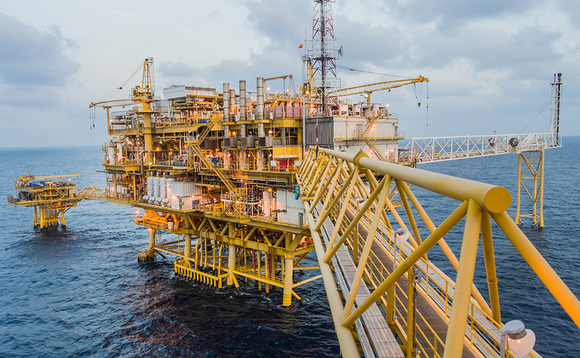
Drilling down: time for PE to explore oil production?

Could oil prices at a half-decade low be a good time for private equity to move into the oil exploration & production sector? Mikkel Stern-Peltz reports
As the price of a barrel of oil sinks below the low watermark of less than $70 per barrel, a global glut in the supply of crude has put pressure on prices in the oil & gas sector.
However, a dearth of northern European oil & gas investment and spending could provide lucrative opportunities for private equity firms with the right expertise and mettle to take on the risk.
In the past 10 years, the cost of services and materials in the North Sea has inflated. This has proven very lucrative for private equity, which has historically favoured the services sector over exploration and production (E&P).
Figures from unquote" data show only 29 E&P deals were made in the UK and Nordic region since 2004, compared to 194 oil equipment & services investments during the same period.
The reasoning behind services investments is to insulate funds from glut/shortage cycles in oil production and the resulting price fluctuations. But with prices as low as they are, there may be opportunities for private equity to capitalise on E&P investing by getting in at the bottom of the cycle.
Intrepid explorers
Josselin de Roquemaurel, a director in KKR's energy team in Europe, says the interest is already here. "I think it's fair to say that there is a bit more competition coming in in Europe. You're seeing more capital being raised and you're seeing more private equity interest in the energy sector and E&P, in particular."
De Roquemaurel notes it is too early to form definitive views about how the oil price correction will affect E&P, but points out that companies' cashflow might be under a certain degree of pressure given the outlook for the next 6-12 months.
"They will be under pressure, will generate less cash, meaning they will have less cash available to reinvest and redeploy in their operations," says de Roquemaurel. "Some of the less capitalised companies will be under pressure and they will need capital, and investors like us can offer capital solutions.
"It's not necessarily for everybody, but there are opportunities and there have been opportunities in E&P. I'd be very surprised if it's not going to create opportunities for investors like us."
His view is supported by SEB energy analyst Richard Bexelius, who says some E&P companies may already have the reservoir finds, but, as he points out, "many of the finds cannot be developed by the exploring companies alone – they need partners".
"These partners have usually been other oil companies or gas companies and so on," says Bexelius. "But of course, private equity can play a role in this."
Game is rigged
While the shale and desert E&P companies driving the glut continue to pump out oil with abandon, projects in the North Sea and on the Norwegian Continental Shelf (NCS) are facing the issue of how to handle E&P in a low oil-price environment.
Because shale and desert projects are onshore, the costs associated with E&P are much lower than offshore and deep-sea extraction in the hostile environs of the North Sea or NCS, which are much more capital-intensive plays.
Inter-governmental advisory body Organization of the Petroleum Exporting Countries (Opec) recently reaffirmed its output numbers and rejected a reduction in the oil production of its member countries, and Russia is signalling it will maintain output levels next year as well. Meanwhile, the Norwegian oil sector is gearing up to develop two of the largest ever finds in Norwegian territorial waters: the Johan Sverdrup and Johan Castberg fields.
Combined with a continued shale oil frenzy and slowing global demand, some analysts are predicting a prolonged price depression. The result is that investment in expensive exploration projects in the North Sea and NCS are much less attractive. Not only is potential exploration cost discouraging, but the risk of finding reservoirs too inaccessible to develop at a reasonable price – or even finding nothing at all – both point to declining E&P spending.
A report published by SEB in August analysing spending in Nordic E&P businesses revealed companies generally predicting flat growth or cuts to capital expenditure in 2015-2016. Though the report was published before the October drop in oil prices, companies in the oil & gas sector are unlikely to increase spending following this development.
"Of course capex has a high correlation with oil prices," says Bexelius. He adds that private equity players have previously entered the market when capex was at fairly high levels, though some investments have been underperforming: "That means from a value perspective prices have gone down a lot and that is of course a consequence of their margins and their market."
Magnate magnets
"My view on the sector as a whole is that from time to time it's extremely volatile and things move rapidly in both directions," Bexelius says, but adds the current state of the sector may present an opportunity for private equity players if they are "willing to take on the volatile risk".
Risk in E&P investment is compounded by the threat of oil prices potentially remaining low for the foreseeable future – five years to a decade or more. Long-term price depression could dampen much of the upside to E&P as it means GPs would not see increased profits from rebounding oil prices as would be expected if they were assuming they were investing at the bottom of the cycle.
Though the oil & gas industry is among the most capital-intensive in the world, there is evidence that day rates on drilling rigs are coming down. This would improve the profitability of drilling rigs as day rates represent a substantial portion of the total cost in the development of oil fields. As such, GPs may also take into account increasing profits by significant cost reductions through operational efficiencies rather than betting on rising prices of a volatile commodity.
GPs looking to explore E&P investing in NCS and North Sea operations may find the industry less suited to traditional private equity investment models. The time taken to generate cashflow in the sector is rarely immediate, and can often have a horizon well past the common planned divestment period of other industries.
Slick investments
"The LBO model isn't always applicable to the European E&P sector," warns KKR's de Roquemaurel. Some investment models prevalent in the sector are more akin to growth capital injections, such as backing a group to acquire and develop discoveries, which would be unlikely to generate any immediate cashflow but require a lot of capital upfront to develop the field for production.
For its part, KKR's recent investment in Aberdeen-based OEG Offshore Group was made as a balance sheet acquisition, rather than through a fund. This option allows GPs to make E&P investments without the pressure to create returns that a fund's 10-year lifespan brings, though the investment can be offered to a fund or LPs at a later time.
A more risk-intensive play would be to provide financing for exploration and appraisal companies, where GPs back a team to buy licences, drill and explore and hopefully make a discovery. If a discovery is made, it will be a very valuable asset even before production is started, as it can be sold to an oil company that will do the actual development and extraction. However, if the exploration turns up nothing, the sunk cost could be huge.
"There is a market for oil development & discovery – it's not a very deep one, certainly not in the North Sea – but people have made returns like this," says de Roquemaurel. "It's just a different approach, a different model which is very, very different from the rest of the private equity world, very specific and explains why so few people have played it in Europe.
"You can make returns through those investment strategies; it's just a different set of risks."
Latest News
Stonehage Fleming raises USD 130m for largest fund to date, eyes 2024 programme
Multi-family office has seen strong appetite, with investor base growing since 2016 to more than 90 family offices, Meiping Yap told Unquote
Permira to take Ergomed private for GBP 703m
Sponsor deploys Permira VIII to ride new wave of take-privates; Blackstone commits GBP 200m in financing for UK-based CRO
Partners Group to release IMs for Civica sale in mid-September
Sponsor acquired the public software group in July 2017 via the same-year vintage Partners Group Global Value 2017
Change of mind: Sponsors take to de-listing their own assets
EQT and Cinven seen as bellweather for funds to reassess options for listed assets trading underwater








